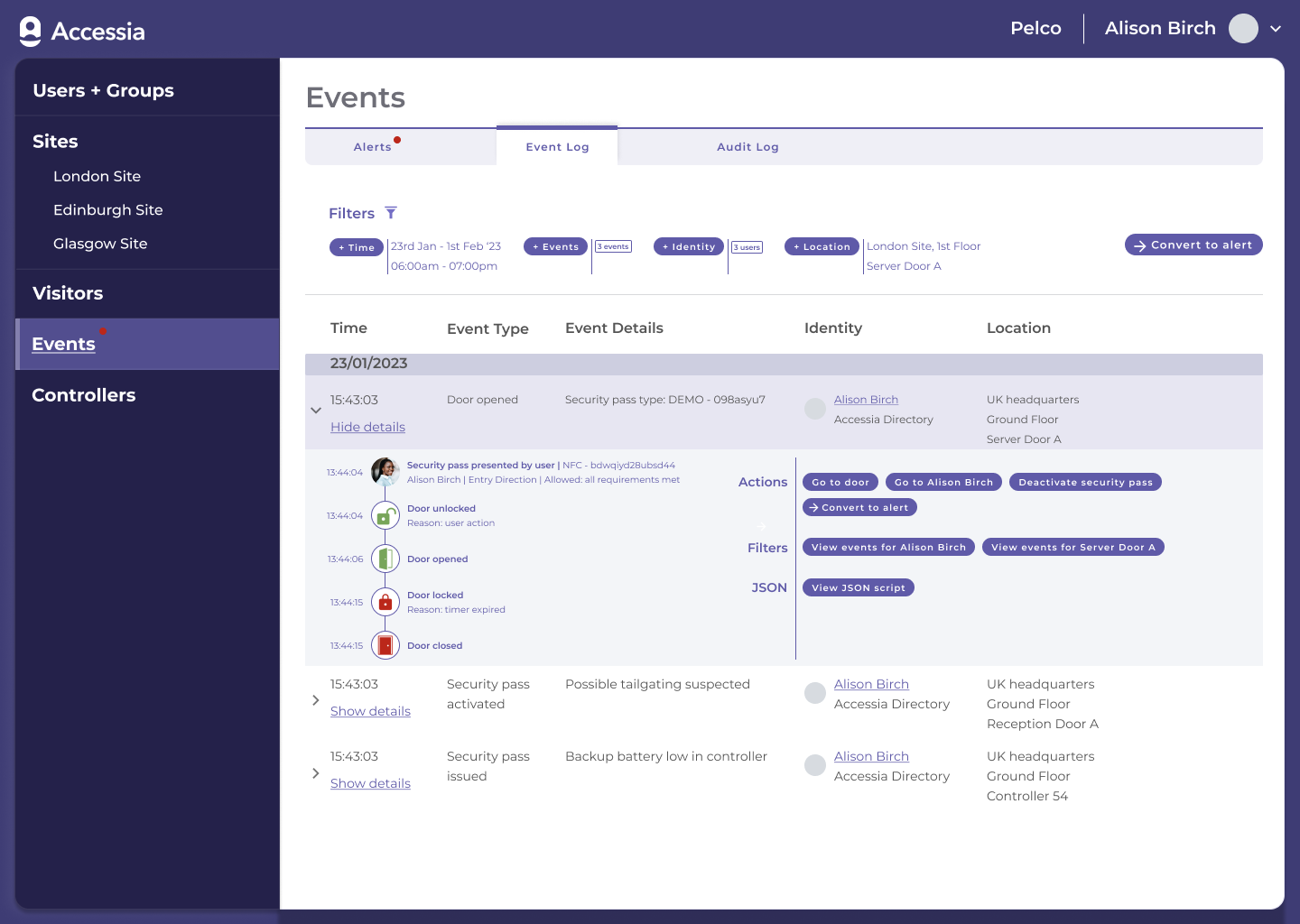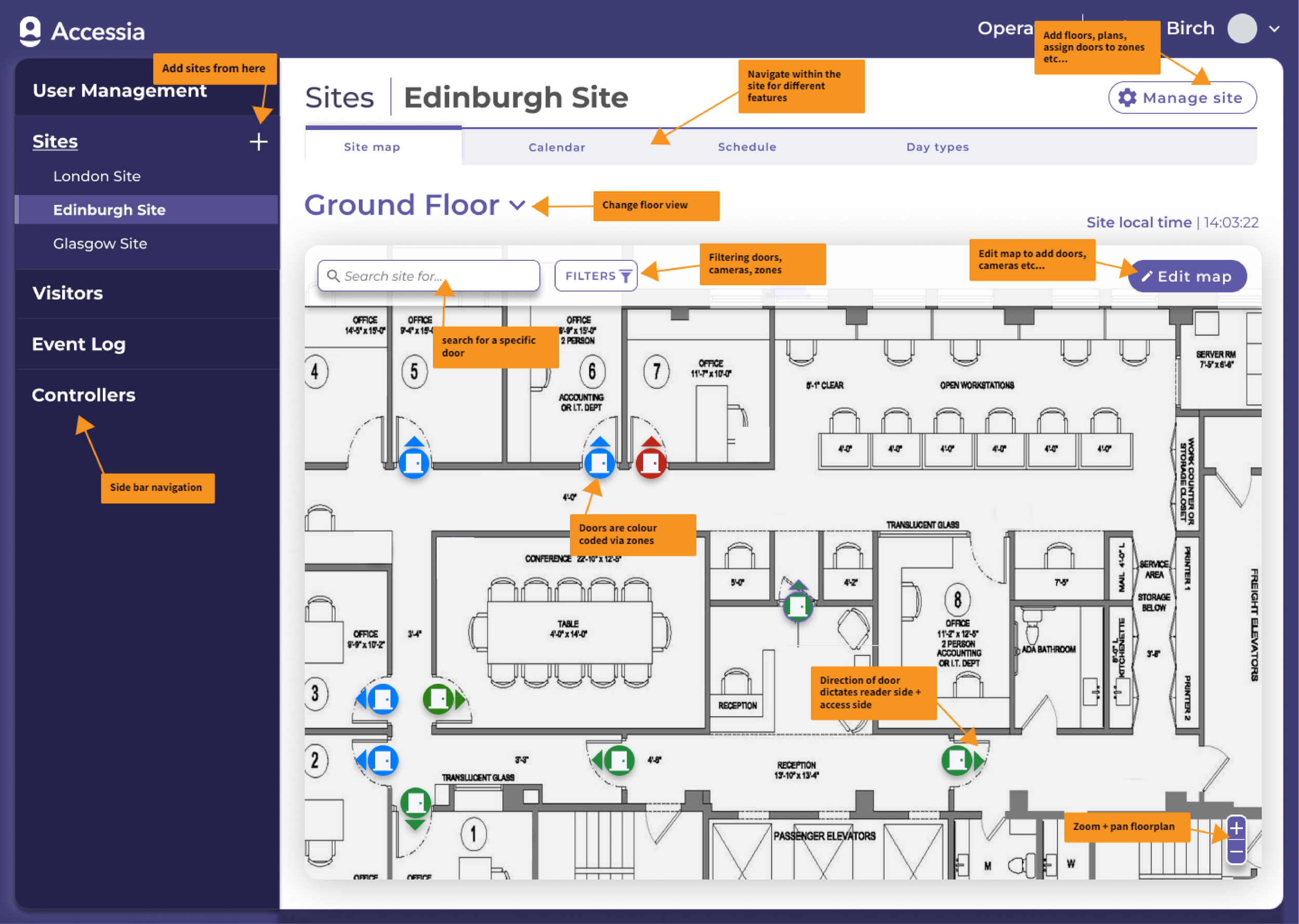Accessia
As the sole designer at Accessia, a dynamic startup specializing in physical and access security solutions, I had the unique opportunity to spearhead the development of a comprehensive UX design system. This project was a collaborative effort, working closely with talented software engineers, a skilled UX writer, and a dedicated product manager.
Our goal was clear: to establish a robust UX design system that not only streamlined our product development processes but also ensured a cohesive and user-centric experience across all our offerings. Over the course of this project, I led the charge in creating a design system that would serve as the foundation for Accessia's future success.
Component library
The component library I created at Accessia served as the cornerstone of design consistency throughout our product. It standardized visual elements, interactions and components, promoting a cohesive user experience while streamlining development for greater efficiency.
Iterating
Iterating allowed me to refine and reach the optimal design solution. Through a cycle of iterating and user testing, I was able to gather user feedback, identify pain points, and adapt accordingly, which ultimately resulted in our final product features.
Each iteration brought me closer to a solution that aligns precisely with user needs and preferences. It helped uncover unforeseen challenges and opportunities, fostering innovation. Through iterating, not only could I reach a user-centred solution, but I could also optimise the transfer of design to the development team.
These iterations aim to determine the optimal layout for an event log entry, focusing on the strategic positioning of action elements to minimize the user's cognitive load. The goal is to highlight critical information and clearly present actionable steps for each element. Achieving the optimal design will enable users to swiftly respond to urgent events, such as an unauthorized person accessing a high-security room and initiating a lockdown. This efficiency is crucial for rapid reaction in emergency situations.
Floors, doors, and zones
This site map not only simplifies the setup and management of security infrastructure but also offers real-time insights and control, empowering users to maintain a secure environment with ease and confidence.
Users can add doors, cameras, and controllers to a floorplan of their building. They can set up custom alerts for sensor events like doors left open or reader tampering, manage controller connections, and access real-time information about doors, including schedules and remote unlocking.
The day types and zones features simplify the scheduling of multiple doors simultaneously. Users can create day types for different schedules (e.g., weekdays, weekends) and group doors into color-coded zones (e.g., high security, common areas). This streamlines door access management, making it easier for security managers to maintain schedules and monitor security levels.
Events and alerts
The event log empowers security managers with a powerful tool to monitor and manage security events comprehensively. With this feature, security managers gain real-time visibility into all on-site activities, including who enters the facility through which doors, and any triggered alerts such as fire alarms. It provides a detailed record of access methods used, identifies controller issues, and flags instances like doors being left open for extended periods.
The event log includes audit trails, documenting any changes made within the Accessia system by users. Security managers have the flexibility to create and customize alerts, enabling them to focus on specific events, such as when a particular individual enters the building. The feature allows for event filtering based on multiple criteria, including location, and users. Actions can be taken on specific events e.g., remotely disabling a user's security pass). In essence, the event log provides security managers with all the tools they need to maintain the highest level of security on their site, ensuring a safe and well-managed environment.
Responsive UI
A responsive UI ensures that the system functions well and looks good on various devices and screen sizes. This adaptability improves the user experience and accessibility, making the system more inclusive. Additionally, it future-proofs the system, ensuring it remains effective as technology evolves. In essence, a responsive UI is essential for a unique system to be both user-friendly and adaptable to changing technologies.
The UI was optimised for the smallest mobile screens (iPhone SE) as a precursor to developing native apps for Android and iOS.
Day types + scheduling
Users + groups
Events
Floors, doors + zones














